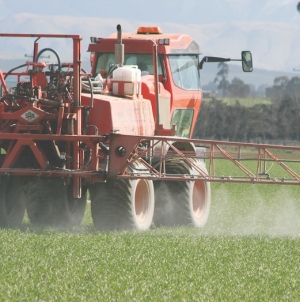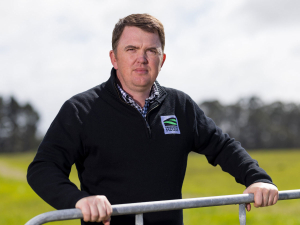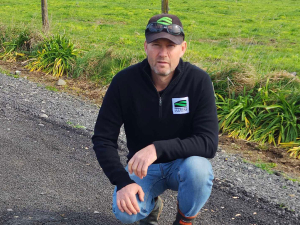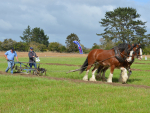Starting spray programmes too early will either stretch spray intervals, leaving crops unprotected at more important growth stages or, if stretched intervals are to be avoided, too many sprays will be required putting margins and chemistry at risk, explains FAR director of research and extension Nick Poole.
“The problem with the T-nought (T0) timing is it starts to dictate other timings. You’re better to ask ‘When is the most important spray timing for the crop?’ and work back from that,” he told growers at one of two South Canterbury spring field walks recently.
“We work on the basis that some leaves are more important than others.”
The most important leaf is the flag leaf, the last to emerge. Protecting that is paramount to optimise yield, with leaves two, three and four, as you go down the stem from the flag leaf, declining in importance.
From a grain yield perspective, the leaves below those, the ones on wheat plants now, contribute next to nothing. But they do indicate what diseases are present in the crop which could cause yield losses later in the season. One that’s increasingly likely to be seen is septoria tritici, and it’s the reason spray strategies need reviewing.
“Last year septoria tritici was, wall-to-wall, the most important disease in wheat. It resurfaced in 2011 so last year was the third season we faced it and it took over. The reason, as we now know, is the strobilurin products – Comet, Amistar, Fandango etc – weren’t working against septoria.”
Samples of the disease taken from crops in most regions of New Zealand and sent to Europe for analysis were found to be resistant to the previously highly effective fungicide group. (Rural News, April 3).
“It doesn’t mean they won’t work against the rusts or other diseases, it’s just septoria and, as we’ve known for some time, powdery mildew.”
Meanwhile, efficacy of the triazole group of fungicides is also waning, though with the triazoles it’s a case of the disease’s sensitivity to the chemistry gradually reducing, which can be overcome with higher rates, rather than the all, and now nothing, septoria control of the strobilurins.
That reduced sensitivity to triazoles undermines the case for so-called T0 sprays, applied before the conventional spray timings for wheat. If they’re to have any impact on septoria present at that time, typically about growth stage 30 of the crop, much higher rates than the 0.2-0.3L/ha of Opus (epoxiconazole) historically used will be needed.
Where septoria tritici pressure is high, probably because of early sowing with a susceptible cultivar, there’s a case for using a three-quarter rate of triazole, 0.75L/ha in the case of Opus. Other than that, FAR says T-nought sprays “should not be routine” as “yield increases are usually small and can be uneconomic.”
However, T-noughts can buy some flexibility with subsequent timings which can be needed if weather or other circumstances prevent spraying.
At the traditional first spray for wheat, the ‘T1’ at growth stage 31-32, the first of the really important leaves from a yield building perspective is emerging: leaf three. To protect it, a T1 application of triazole at three-quarter rate or more should be considered and where disease pressure is high, a fungicide from the relatively new group of
chemistry, the SDHIs, added, says FAR.
Besides Syngenta’s Seguris Flexi (isopyrazam), two new SDHI’s are on the market this spring: Aviator Pro (prothiaconazole + bixafen) from Bayer Cropsciences, and Adexar (epoxiconazole + fluxapyroxad) from BASF. While both contain a triazole as well as an SDHI, the formulations mean a top-up with straight triazole such as Opus (epoxiconazole) or Proline (prothiaconazole) is needed to reach that three-quarter rate of triazole.
FAR says that in general, where rust’s been absent and the principal disease is septoria tritici, Proline has performed better than Opus, particularly in South Canterbury and Southland.
Poole stresses it’s important “not to fire this (T1) shot so early you miss that leaf [three] completely.”
If that happens, leaf three can become severely infected with septoria, and infect leaf two before the flag leaf emerges and what is usually the most important fungicide application of the season, the T2 at GS39, is made.
“Try to keep the gap reasonably tight between T1 and T2. Don’t let it go out beyond four weeks.”

















